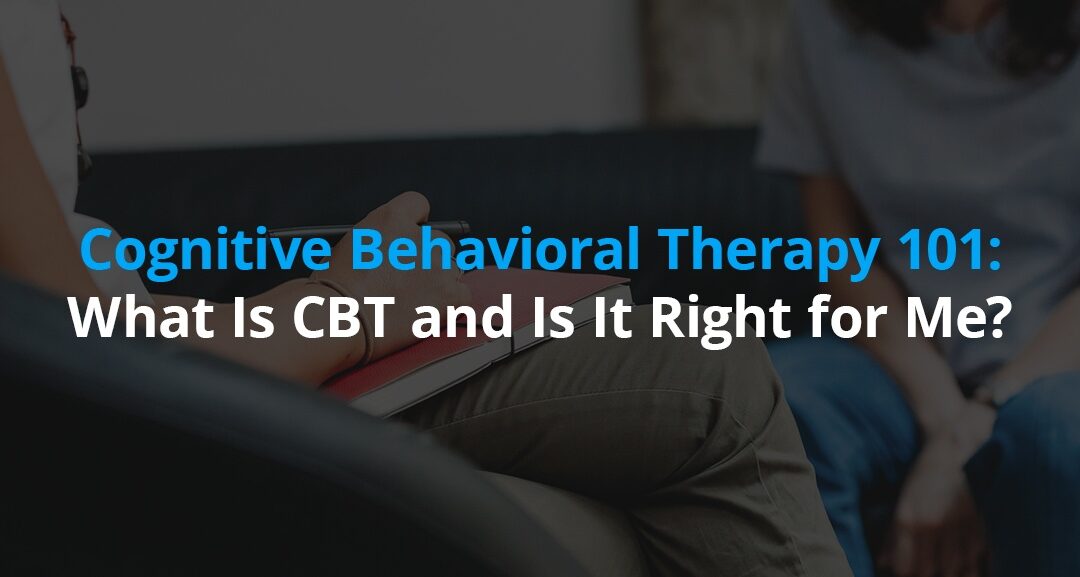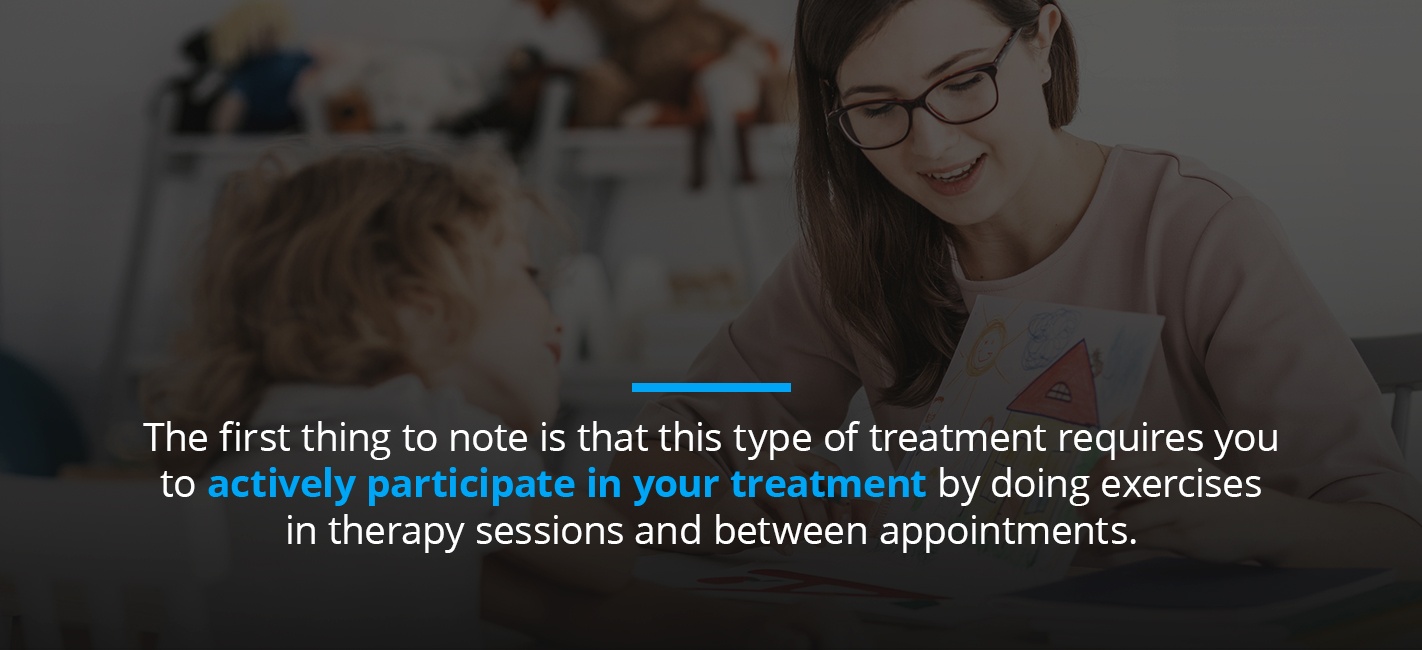There are many therapy methods practitioners may use to help their patients. Cognitive behavioral therapy, also known as CBT, is one of these options. Whether this treatment option will work well for you depends on the plan that you and your therapist agree upon. However, knowing more about your options can help you act as an informed participant in discussions about your treatment plan.
What Is Cognitive Behavioral Therapy?
Cognitive behavioral therapy focuses on changing how you feel about and react to situations by combating negative thought patterns. It emerged in the 1960s when founder Aaron Beck designed a treatment method that would use more evidence-based means of helping patients. Unlike Freudian psychoanalysis that sought to delve into childhood problems as the causes of current struggles, CBT gave patients a way to combat their existing feelings. This form of talk therapy works well with all ages, from children through seniors. In fact, many patients prefer this method because those who have CBT may notice a positive change in a small number of sessions. If your therapist believes this treatment can benefit you, you may only need therapy for a brief period.
What to Expect in Cognitive Behavioral Therapy
Many patients want to know what to expect in CBT and how it works. The first thing to note is that this type of treatment requires you to actively participate in your treatment by doing exercises in therapy sessions and between appointments. You may be asked to keep a journal to jot down notes during your sessions or to write down any homework your clinician assigns. Writing down steps for CBT may also help you separate yourself from the raw emotions you feel and examine your reactions to specific situations. This growth of self-awareness lies at the heart of CBT. So, how does CBT work? The process teaches you to become aware of when you have negative thoughts that do not have a logical basis. It also helps you reframe your thinking to become more positive with your thoughts and emotions. Typically the process includes the following four steps for CBT:
1. Identifying Sources of Negative Actions
First, CBT focuses on identifying negativity sources. For instance, if you experience depression, you and your therapist will look for triggers of negative thinking patterns or actions, such as getting reprimanded at work, that lead to spiraling thoughts of inadequacy. In eating disorder treatment, you may examine what leads you to disordered eating behaviors and thoughts.
2. Recognizing Beliefs and Emotions That Stem From Negative Thoughts
After identifying the sources of your negative thoughts, you can recognize the types of emotions those thoughts produce. For example, if you think you are a burden on other people, how does that make you feel? The answer can help you identify the connection between your emotions and the triggering events.
3. Reframing Negative Thought Patterns
Once you recognize the way negativity can influence your emotions and thoughts, you can work to reframe those beliefs. During reframing, you may need to verbally dialog with those negative thoughts and combat them using logic. Or, your therapist may ask you to write down the thoughts and your responses. Your therapist can help you identify the types of thinking that may lead to negative emotions and why those thoughts can harm you. An example is thinking you will never be happy because you struggle with depression or have an especially bad day. This type of all-or-nothing thinking does not reflect the reality that your feelings on one day do not determine how you will feel the rest of your life. To reframe that thinking, you may say instead, “I had a bad day today, but that does not mean that tomorrow cannot be better.”
4. Practicing Coping Skills and Positive Thinking
Your brain requires regular practice to make any new skill a habit. Therefore, you will have to regularly practice reframing negative thoughts into positive ones. You will also need to recognize when events trigger thinking patterns that could become harmful on a day-to-day basis. During therapy sessions, you and your therapist can work together to create personal goals that positive thinking can help you reach. For example, you may want to feel less depressed to go out with friends or reduce problematic anxiety that keeps you from trying new things.
What Is CBT Used For?
CBT helps treat several situations that may create challenges for you. For instance, you may benefit from CBT to manage the symptoms of a chronic mental or physical condition, deal with emotional trauma, avoid relapse of a mental health concern, handle grief or improve the success of other treatment options. CBT can also be useful as part of a treatment plan for different mental health issues. Therapists recognize several conditions CBT is used for, which include the following:
1. Eating Disorders
Eating disorders include bulimia nervosa, anorexia nervosa, binge eating disorder and otherwise not specified conditions. These conditions combine negative thinking with self-harming actions. For instance, someone with bulimia may have negative thoughts about their body. These thoughts may lead to extreme eating behaviors that can include binging large amounts of food or not eating enough followed by a binge. To compensate for eating, the person suffering from bulimia may feel they have to burn off the calories, skip meals, abuse laxatives or vomit. CBT may help some with this condition to reframe their negative thoughts, which can help them change their disordered eating behaviors or compensation techniques. For those with bulimia or binge eating disorder, CBT can help them learn new methods of thinking to avoid feeling bad about eating or compensating through harmful means. Those with anorexia in recovery may use CBT to combat negative thoughts about weight gain, which can help prevent relapse.
2. Depression
Those who have depression may feel overwhelmed by negative thoughts. CBT can help them identify when thoughts are harmful and prone to worsening their condition. By learning how to fight off depressed thinking and change it to more positive thinking, people who suffer from depression can work to improve their condition.
3. Anxiety Disorders
Problematic anxiety can make situations seem worse than they are. Anxious thoughts can have rational roots or irrational ones, and CBT can help with both. Following CBT can help you recognize when you can take action to make changes to ease anxiety with rational roots. It can also help you see when your anxious thoughts are not based on things you can impact. For example, if you feel worried you will not advance in your job, you could start to look for another position where you have more room for promotion. On the other hand, if you worry about something out of your control, such as getting sick because you stood near a coughing co-worker, CBT can help you calm yourself by thinking about how unlikely you are to get sick.
4. Other Conditions CBT Can Help Treat
CBT may also help with the following conditions:
- Post-traumatic stress disorder (PTSD)
- Phobias
- Schizophrenia
- Bipolar disorder
- Sleep disorders
- Sexual disorders
- Substance use disorders
- Obsessive-compulsive disorder (OCD)
Speak With a Professional in Cognitive Behavioral Therapy in Andover and Surrounding Areas
The first step toward seeing if CBT can help you, your child or your loved one is to talk to a therapist. If you are in Andover, MA, or the surrounding areas, contact us today at Merrimack Valley Psychological Associates for support with your mental health concerns through tele-therapy.
Reviewed By
Dr. David Rainen, PsyD.
I am a licensed clinical psychologist with an extensive background treating a variety of different ages, situations, emotional and mental health disorders in individuals and their families. As part of my 10 year professional and training career in psychology, I have developed and refined my skills and approaches through my work in a variety of diverse settings including: hospitals, community outpatient facilities, college counseling centers, secure and unsecure inpatient/residential treatment programs, and therapeutic day schools.



